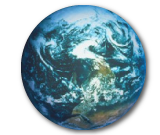As solar energy becomes more and more cost-competitive with oil as an energy source, we at Environmental Research Advocates are very excited to see the incredible strides being made by solar scientists and engineers.
For those of you who are less-familiar with solar panels and how they function, or if you just want to brush-up on the facts, here is ERA’s Solar Panel Cheat Sheet.
How a solar panel works:
Sunlight hits a solar panel, and a semi-conductor (most commonly made of silicon or cadmium telluride) absorbs the photons. Electrons in the semiconductor are knocked free of their atoms, which creates an electrical current that is fed into the grid to power our homes.
Commercial solar panels:
Today, commercial panels generally operate between 12-20% efficiency, which means that less than 1/5 of the sunlight’s photons are converted into electricity.
Solar Research and Design
The two main goals of solar research are to (1) increase the electrical yield and (2) lower the costs of solar electricity.
Increasing the electrical yield is possible in a few ways:
1. Adding more solar cells to the panel.
2. Improving the efficiency of electricity transfer from panel to grid.
3. Broadening the spectrum of light frequencies that the cells are able to absorb and convert into electricity.
Lowering costs involves:
1. Reducing the hard and soft costs of solar installation.
2. Increasing the electrical yield of solar panels (lowering the price of electricity).
3. Creating more durable solar panels that require less maintenance and repair.
Two important facts to note about “Efficiency”:
Solar companies and researchers will throw around many numbers to describe their solar products, namely concerning the panel’s efficiency. When someone claims that a particular solar product or breakthrough is more efficient than another, keep this in mind:
1. Efficiency of a single solar cell is usually greater than the aggregate efficiency of the entire panel.
2. Performance in a controlled lab will usually yield better results than in commercial application.
So when it comes to solar efficiency claims, always make sure to note the conditions of the testing and take them with a grain of salt.

